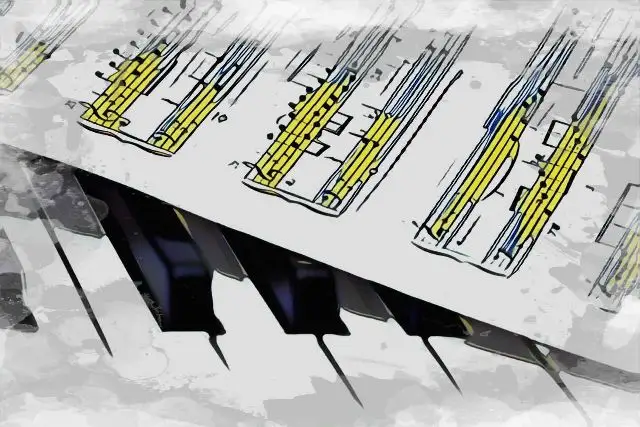Understanding the Different Types of Rests in Music
In music, silence is just as important as sound-- having musical rests makes it possible to build tension, further dynamics, and create greater impact by allowing certain sections to breathe strategically over the course of a composition. But how do we determine the rest duration?
Just like traditional music notes, a rest symbol in music holds a particular length. These symbols are universally understood by musicians so that we can effectively communicate musical notes and rests in sheet music and beyond. We'll give you a crash course on different types of music rests below.
What Does the Rest Symbol in Music Mean?
The rest symbol in music indicates a pause or a number of beats in which the instrumentalist or vocalist is not making sound. Rests have different values just like notes. You'll notice below that a quarter rest is just as long as a quarter note, a half note is just as long as a half rest, so on and so forth.
9 Different Types of Rests in Music
Every musician should have a clear understanding of the different types of rests. We'll showcase all rest notes below, starting from the longest rests making our way to the shortest rests. As you'll note below, the only difference between each type of rest is the amount of time they are executed:
Longa Rest
The Longa Rest is the longest standing rest in music, consisting of 4 whole bar rests. It may also be called a quadruple whole rest. These rests are less common, usually you'll see whole rests as the longest rests in most compositions.
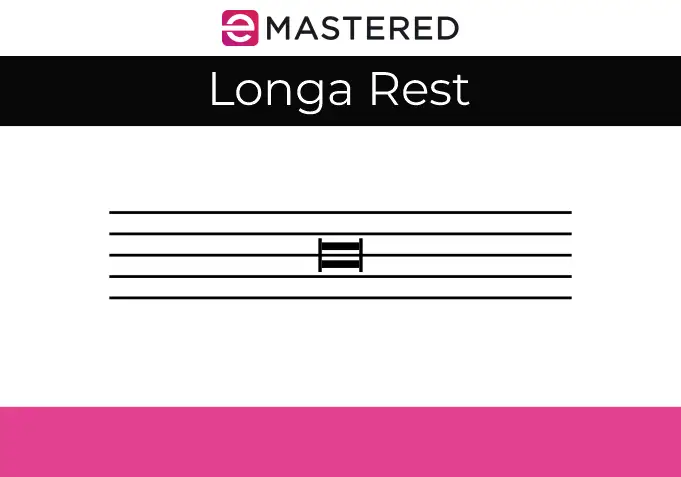
Double Whole Note Rest
As the name suggests, the double whole note rest or breve rest sustains a rest period for two measures. It's common for this to show up towards the beginning or end of a song where a soloist might have finished performing their part and are allowing the accompaniment to introduce or close out the composition.
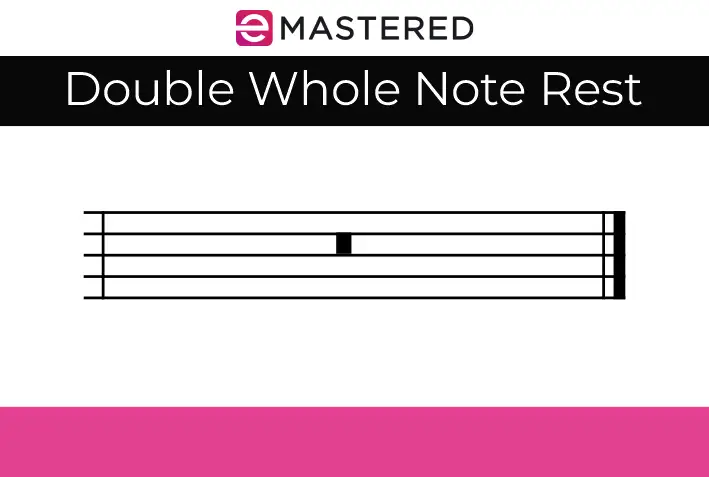
Whole Note Rest
The whole note rest or semibreve rest takes up a whole measure or bar with rests. In common time, a whole note rest would indicate a full measure of rest.
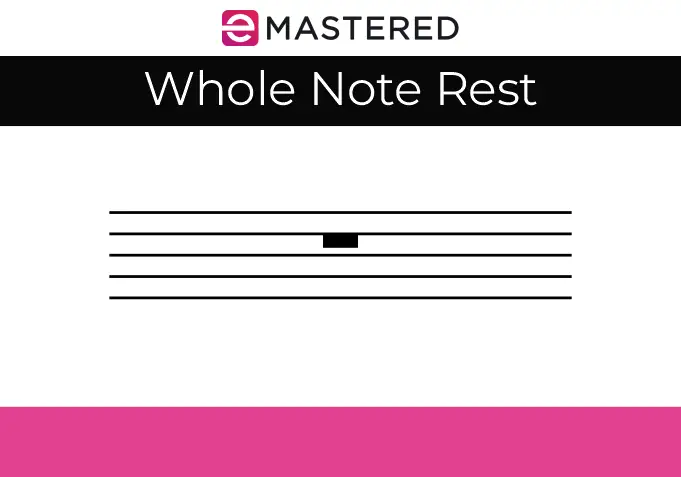
Half Note Rest
Much like the half note, the half note rest indicates resting for half of a measure. The half rest or minim rest looks similar to a whole rest, except the bar is above the line instead of hanging below it as shown in the reference graphic:
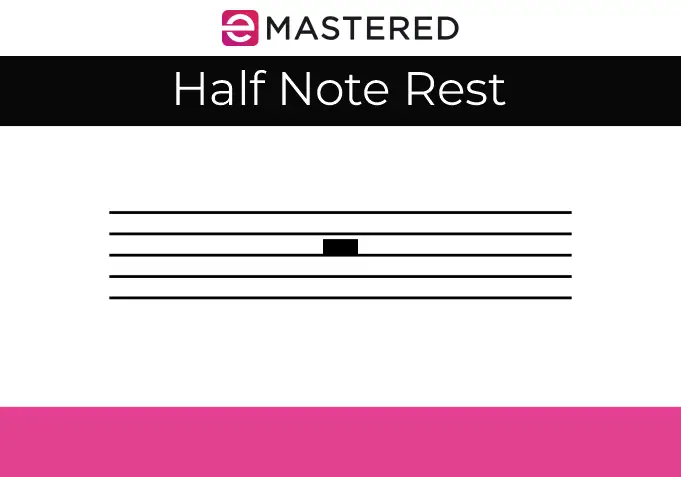
Quarter Note Rest
The quarter note has a corresponding rest in the quarter note, which holds for 1 beat in the time signature of 4/4. A crotchet rest or quarter rest has a squiggle-like shape between the second and fourth lines of the musical staff.
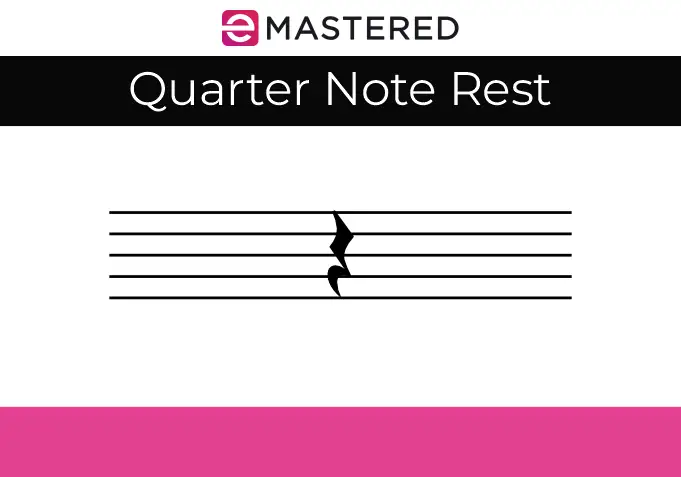
Eighth Note Rest
An eighth rest is worth half of a quarter note rest, or an 1/8th of a whole rest. It has one "flag" or protruding line. These flags are continually tacked on as rests become increasingly subdivided.
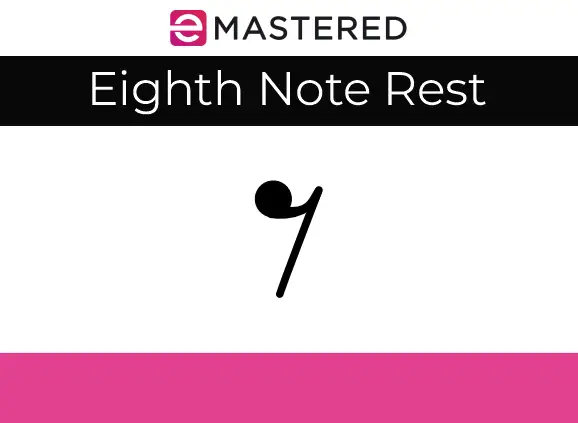
Sixteenth Note Rest
Sixteenth note rests hold half the length as an eighth rest. Another name for the sixteenth note rest is the semiquaver rest. You can count sixteenth note rests with the "1 E and A" system, which effectively divides a quarter rest into four even subdivisions:
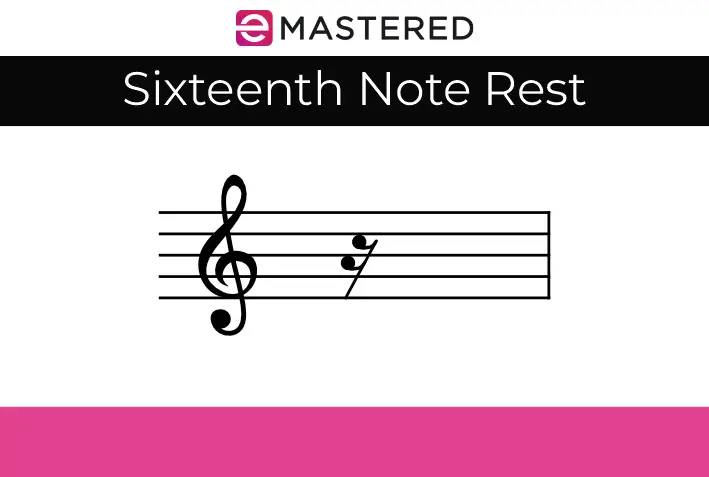
Thirty-Second Note Rest
The thirty second note rest holds half of the sixteenth note rests' value. A thirty second rest has three flags or beams.

Sixty-Fourth Rest
The quickest rest in music is the sixty-fourth rest. These rests are one sixty-fourth of a whole note rest making them incredibly fast and somewhat difficult to count.
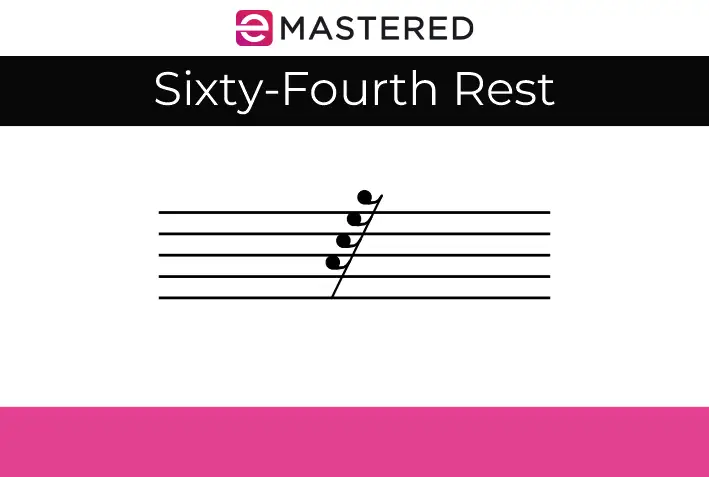
Other Types of Rests
Understanding the nine various rest symbols in music will only get you so far - note that the following symbols can also be added or taken away from a rest in music to change the context of the creation.
Fermata
The word fermata comes from the Italian word meaning "stop". You'll often find that this marking comes before a double bar line, and essentially indicates that you need to sustain or hold a note before continuing the piece. It isn't exactly a rest, but it does affect the pacing of the piece, so it's worth understanding within the context of musical rests.
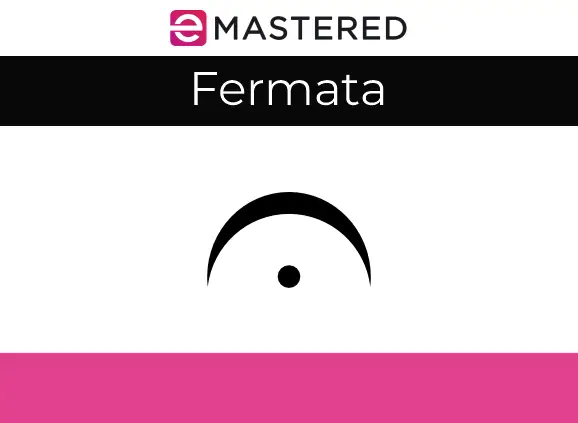
General Pause (G.P.) or Long Pause (L.P.)
Occasionally, you'll see the markings "G.P" or "L.P." in sheet music. These markings stand for grand pause and long pause respectively, and effectively stand for the same thing. G.P and L.P work just like a caesura, noted below, notated a pause for a variable period of time based on a musician's interpretation of a piece.
Caesura
A caesura, otherwise known as a grand pause, that doesn't have a defined note value. This brief pause should be performed at the discretion of the performer or conductor.
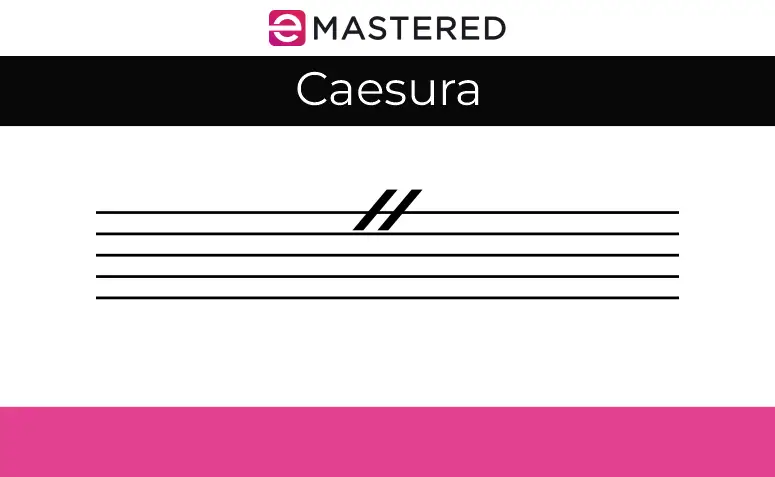
Dotted Rests
Rests that fall outside of the clean note values are shown in modern music notated with a dot. In dotted rests, the dot signifies adding half of the the rest's note value to the note. Confused? Let's take a look at an example.
A whole rest (assuming we're in 4/4) is worth an entire bar or four beats. Half of four beats is two beats, so a dotted whole rest is worth 6 beats.
A dotted quarter rest is worth 1 and 1/2 beats since half of a quarter rest is 0.5.
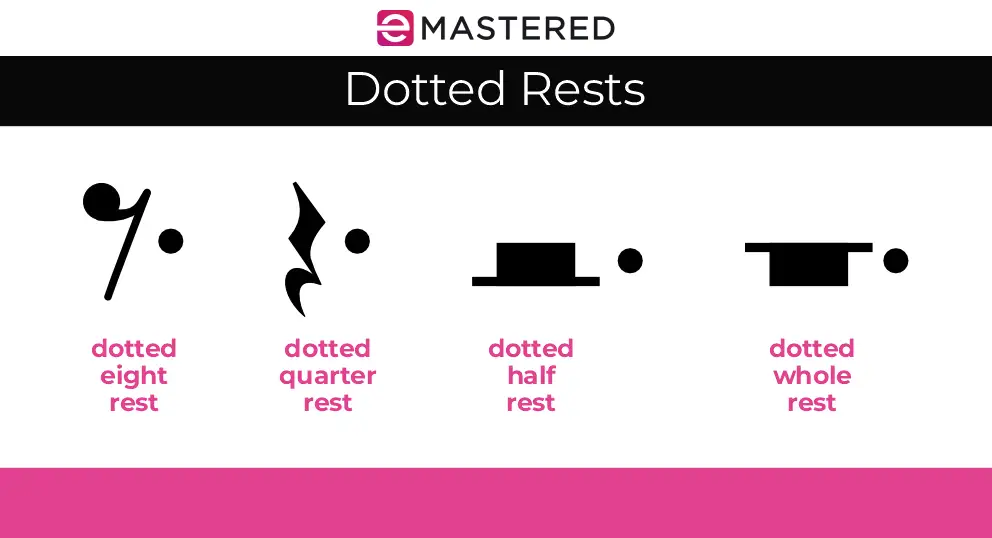
Understanding the Rest Symbol in Music FAQs
Understanding the different rest symbols in music is key to truly understanding basic music theory. Here are some commonly asked questions and answers to help expand your understanding:
What is the rest symbol in music?
A rest symbol is music notation for a pause in music. Each musical rest has its own value which is notated by a different symbol. The most common rests you'll encounter in modern music include a whole rest, a half rest, a quarter rest, and eighth rest, a sixteenth rest, and a thirty second note rest, though smaller subdivisions are less common.
What are rests symbols for?
Rest symbols in music showcase whenever there should be musical rests, or a break in the music or particular part. Rest symbols are not all the same duration, so it's key to understand the note values and how they related to their corresponding symbols.
What does rest look like in music?
A rest in modern music can appear in several different forms. The quarter rest, arguably the most common rest, has the appearance of a squiggle, while half and whole rests look like bars sitting on top or below a set line. Eighth rests, sixteenth rests, and thirty-second note rests all have additional lines to demarcate further subdivision.
What is a 4 beat rest called?
A 4-beat rest in music is called a whole rest or semibreve rest, at least in common time or a 4/4 time signature. As the name suggests, a whole rest takes on the length of an entire measure.
Decoding the different lengths and meanings of note rests is just as critical as understanding the exact length of music notes. Hopefully, this guide makes it easier for you to play rests in any composition.


